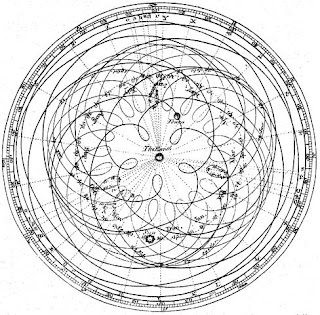I am about 6 feet 2
inches tall. I have never thought of myself as particularly tall.
When I was in elementary school--one time in life when relative size
seemed to matter, where the phrase “size places” had meaning—I
was of middling height. I hit my growth spurt in high school, along
with everyone else, so though I may have grown faster than some of
my peers, I did not notice. The management guru, Morris
Massey, posits that our core values are laid down by the time we
are seven years old. It may well be that I formed the impression that
I was of medium height early on, and nothing in the subsequent
periods (Modeling [ages 8-13] and Socialization [ages 13-21])
disturbed that impression. That is itself a disturbing discovery.
What other operating assumptions from when I was 6 years old have
survived unquestioned for six decades?
A logical first step
would be to determine by some objective standard whether I am tall.
According
to the US Center for Disease Control and Prevention, the mean
height of a male over 20 years old in the United States is about 5
ft. 9 in. At 6 ft. 2in. I am in about the 94th percentile
of men. So when I am in a crowd of a hundred random men in the US,
there are likely to be no more than 6 men taller than I am. It also
means that in a crowd, I know where I am because I can see all around
me. My spouse is 5 ft. 2 ½ in. tall; she is in about the 35th
percentile for U.S. women over 20 years old. The 5th
percentile for men begins at about 5 ft. 4 in. That means that when
she is in a crowd, 65% of the women and over 95% of the men are
taller than she is, and many are tall enough to obscure her vision
completely. She does not like being in crowds. How stupid do you need
to be to to not realize the fundamental difference in our experiences
of crowds? I have realized it from time to time, but it is not a
consistent part, a necessary part of being with my spouse in a crowd.
No,
I never forget that I am taller than she is, but wrapped in the
misconception that I am not that tall, I figure everyone is seeing
about the same thing I am; therefore, I don’t understand that what
I am seeing has anything to do with my height. Do you see how this
works? Because I do not see myself as tall, I have been unaware of
what should be clear evidence that I am tall. I must believe I am
tall before I can understand that what I see in a crowd is evidence
that I am tall.
Since the 2016
presidential election, like many crestfallen progressives, I have
been thinking about how people can ignore facts and evidence and
logical reasoning. Reflecting on my height problem has made me more
sympathetic to someone who might ignore evidence when deciding how to
vote. Breaking the habit of thinking of myself as of average height
did not happen because I got more information; it happened because I
looked at specific situation from the point of view of someone I
cared about and did it enough times and with increasing attention so
that I understood the situation differently.
But saying that
looking at a situation or idea or problem from another point of view
may be crucial in understanding a situation is not saying that truth
is relative. Evidence supported by facts must the bedrock of our
understanding of the world. Taking into account another perspective
does not mean that facts are irrelevant to arriving at the best
understanding of a situation, but ignoring another point of view may
make facts invisible. In my case empathy preceded evidence. And even
with the empathy and the evidence, it still takes a conscious effort
to think of myself as tall.
So my sense of
superiority in thinking that I voted based
on logic and evidence, and those who voted differently did
not, assumes that my decision is rooted in self-evident facts. But
perhaps those facts were not just unpersuasive to some people, they
were invisible, and the evidence they based their decisions on was
invisible to me. Understanding the difference this way does not
change what I think of the decisions, but it does mean I can be less
puzzled about why people made the decisions they did in the face of
evidence compelling to me but invisible to them. Their decisions no
longer seem blatantly illogical since they do not ignore facts; they
don’t see them.
My height problem
suggests that over the next months, as the changes resulting from the
2016 election play themselves out, if people experience some changes
directly or indirectly through what happens to those they care about,
their views of the situation may change, and facts may begin to
appear, like the letters in Wheel of Fortune, until the
message pops into place for them. I will be guessing and spinning the
wheel too, and we will see who among us is most surprised by the
results.








